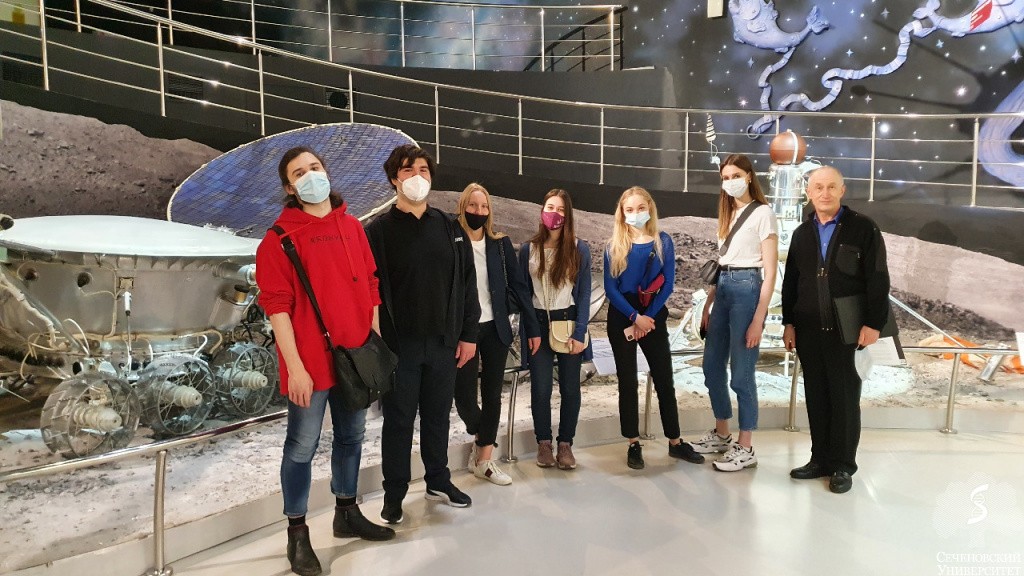-
About University
- Mission & Brand Strategy
- University Leadership
- Rector's Welcome
- History
- Regulatory Documents
- Contacts
- Staff
- International Recruitment
- Partners
Applicants- Why Sechenov University
- Degree Programmes in English
- Preparatory Courses
- Non-Degree Programmes
- Transfer from other Institutions
16.03.2022Lunar soil potentially dangerous for colonists
 Researchers believe that they have identified a potential danger to people in the microelement composition of the lunar soil.
Researchers believe that they have identified a potential danger to people in the microelement composition of the lunar soil.
A joint effort by scientists from Sechenov University and Platov South Russian State Polytechnic University focused on the chemical composition of the soil from 4 different regions of the Moon and compared it with the average levels of elements in terrestrial soils.
“The basis of the lunar soil is regolith. It contains, among other things, chromium, beryllium, nickel, and cobalt — which in the case of prolonged contact may have negative effects on the health of lunar colonists, affecting their respiratory, cardiovascular, and digestive systems,” said Ivan Ivanov, Professor of the Department of Occupational Medicine, Aviation, Space, and Diving Medicine at Sechenov University.
He added that this soil composition could cause irritation of the skin and respiratory tract, as well as damage to the liver, kidneys, and central nervous system.
“These aspects — along with other factors — should be taken into account when planning the colonisation of the Moon,” Ivan Ivanov added.
Scientists believe that for the proper functioning of a lunar base, the colonists will need to measure the levels of these trace elements in the lunar dust that will be coming in contact with the spacesuits and equipment. The colonists will also need to determine maximum contamination levels and develop decontamination procedures for personnel and equipment.
Photographed: Professor Ivan Ivanov and students of the Department of Occupational Medicine, Aviation, Space, and Diving Medicine at Sechenov University.
Embed on website
Lunar soil potentially dangerous for colonists
 Researchers believe that they have identified a potential danger to people in the microelement composition of the lunar soil.
Researchers believe that they have identified a potential danger to people in the microelement composition of the lunar soil.
A joint effort by scientists from Sechenov University and Platov South Russian State Polytechnic University focused on the chemical composition of the soil from 4 different regions of the Moon and compared it with the average levels of elements in terrestrial soils.
“The basis of the lunar soil is regolith. It contains, among other things, chromium, beryllium, nickel, and cobalt — which in the case of prolonged contact may have negative effects on the health of lunar colonists, affecting their respiratory, cardiovascular, and digestive systems,” said Ivan Ivanov, Professor of the Department of Occupational Medicine, Aviation, Space, and Diving Medicine at Sechenov University.
He added that this soil composition could cause irritation of the skin and respiratory tract, as well as damage to the liver, kidneys, and central nervous system.
“These aspects — along with other factors — should be taken into account when planning the colonisation of the Moon,” Ivan Ivanov added.
Scientists believe that for the proper functioning of a lunar base, the colonists will need to measure the levels of these trace elements in the lunar dust that will be coming in contact with the spacesuits and equipment. The colonists will also need to determine maximum contamination levels and develop decontamination procedures for personnel and equipment.
Photographed: Professor Ivan Ivanov and students of the Department of Occupational Medicine, Aviation, Space, and Diving Medicine at Sechenov University.



